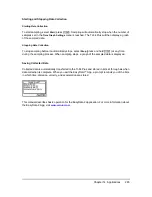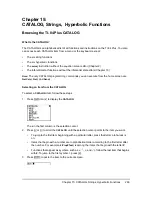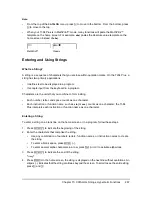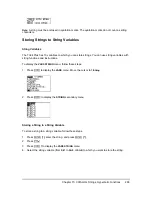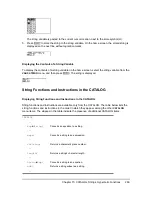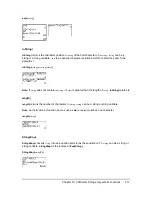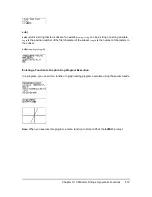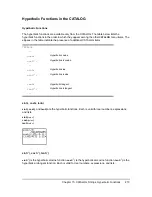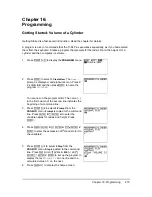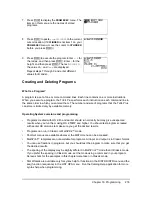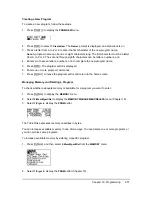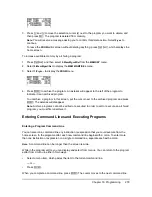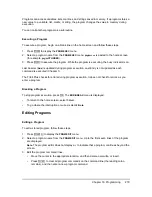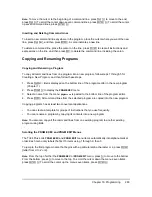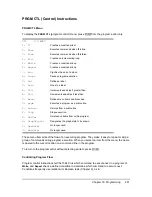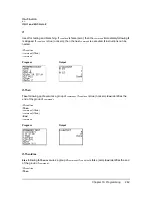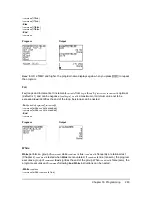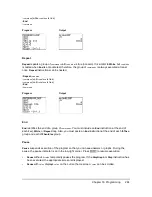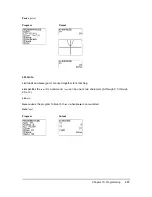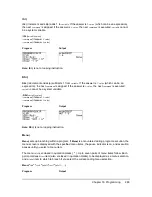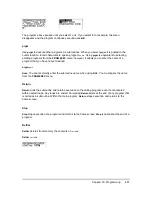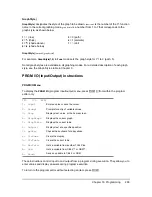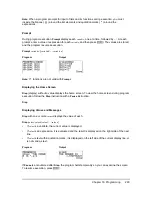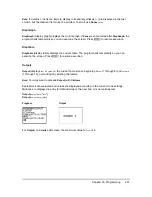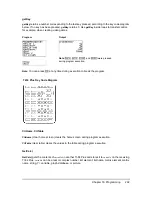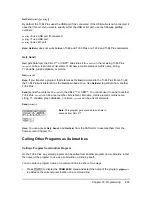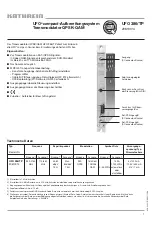
Chapter 16: Programming
279
Programs can access variables, lists, matrices, and strings saved in memory. If a program stores a
new value to a variable, list, matrix, or string, the program changes the value in memory during
execution.
You can call another program as a subroutine.
Executing a Program
To execute a program, begin on a blank line on the home screen and follow these steps.
1. Press
to display the
PRGM EXEC
menu.
2. Select a program name from the
PRGM EXEC
menu.
prgm
name
is pasted to the home screen
(for example,
prgmCYLINDER
).
3. Press
Í
to execute the program. While the program is executing, the busy indicator is on.
Last Answer (
Ans
) is updated during program execution. Last Entry is not updated as each
command is executed (Chapter 1).
The TI-84 Plus checks for errors during program execution. It does not check for errors as you
enter a program.
Breaking a Program
To stop program execution, press
É
. The
ERR:BREAK
menu is displayed.
•
To return to the home screen, select
1:Quit
.
•
To go where the interruption occurred, select
2:Goto
.
Editing Programs
Editing a Program
To edit a stored program, follow these steps.
1. Press
~
to display the
PRGM EDIT
menu.
2. Select a program name from the
PRGM EDIT
menu. Up to the first seven lines of the program
are displayed.
Note:
The program editor does not display a
$
to indicate that a program continues beyond the
screen.
3. Edit the program command lines.
•
Move the cursor to the appropriate location, and then delete, overwrite, or insert.
•
Press
‘
to clear all program commands on the command line (the leading colon
remains), and then enter a new program command.

